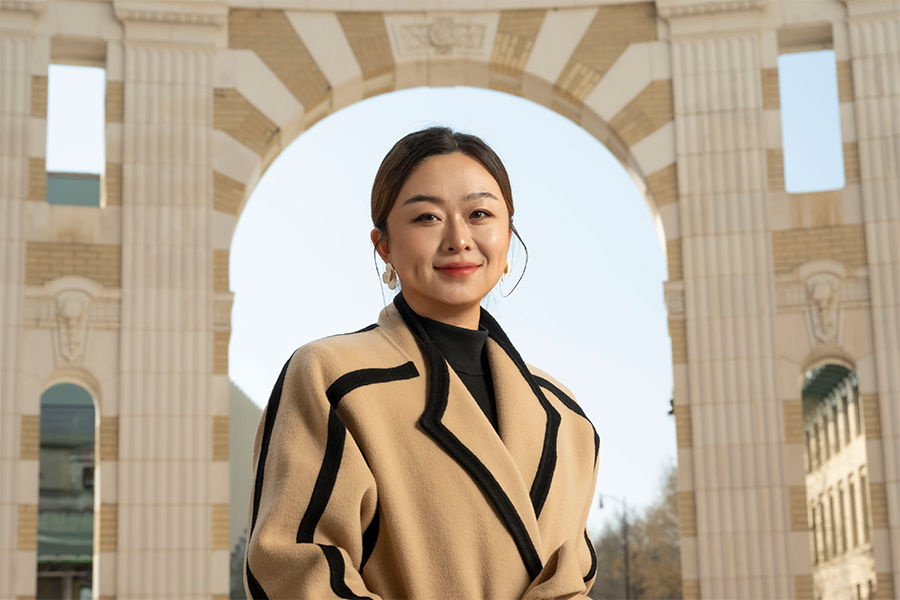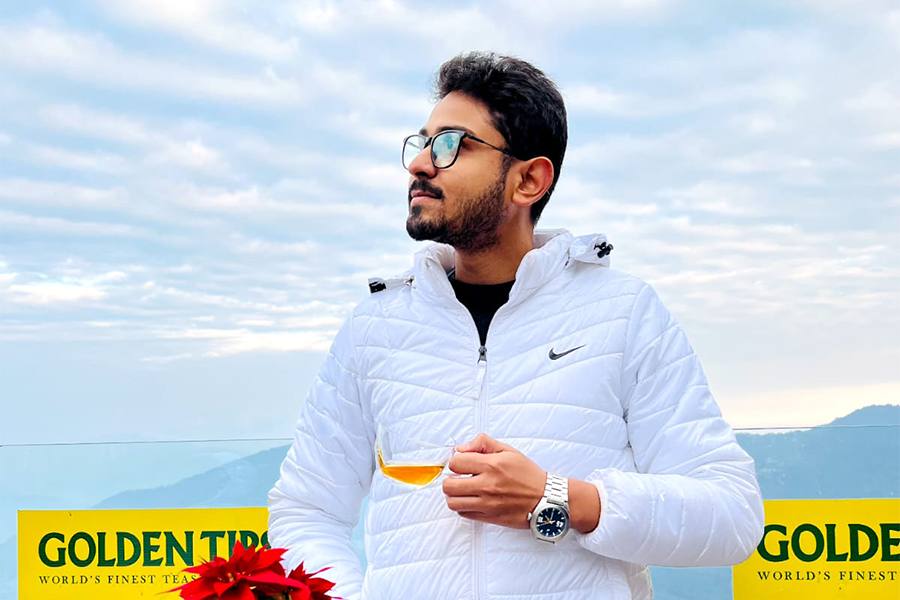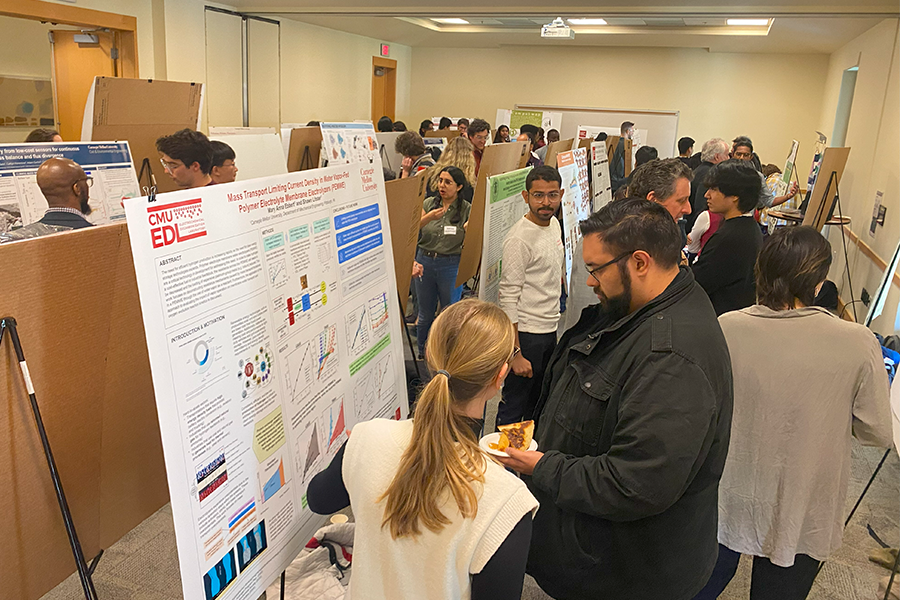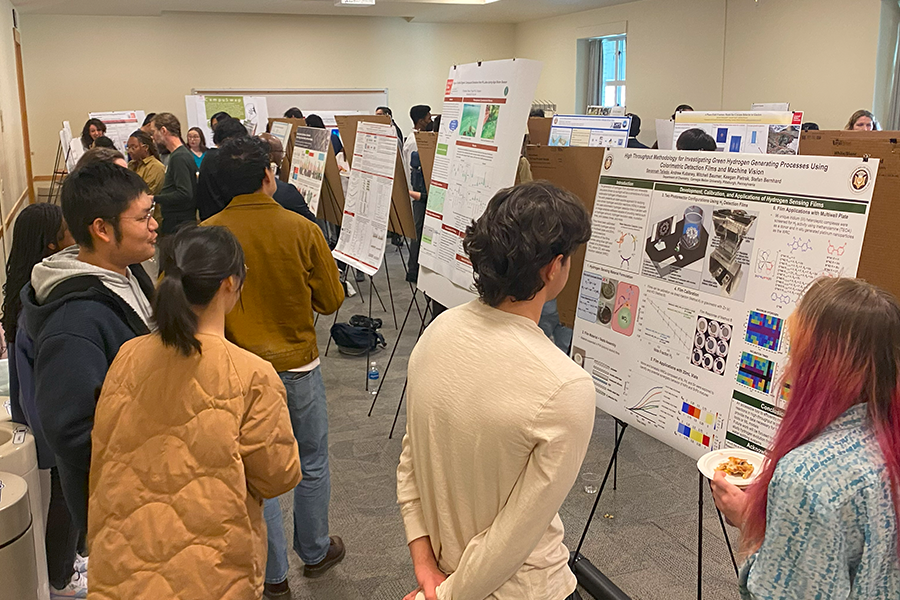Steinbrenner Institute Hosts 2024 Sustainability Symposium
By Kathy Zhang
The Steinbrenner Institute for Environmental Education and Research hosted its 2024 Sustainability Symposium on Friday, March 29th. The annual symposium began in 2016 as an Earth Day event and is an opportunity for both undergraduate and graduate students at CMU to showcase projects and research of theirs which relate to sustainability in some way. This year it saw around forty student projects of various disciplines from undergraduate, masters, doctoral students.
The symposium offered participants two prizes and was judged by:
- Ginger Brooks Takahashi - Artist & Adjunct Professor, Carnegie Mellon University
- Matthew Mehalik - Executive Director, Breathe Project
- Masoud Sayles - Senior Program Manager, Grounded Strategies
Special thanks to the judges for their time and careful review of all projects and the student participants for their captivating work.
This year's two $1,500 Travel Awards were awarded to:
 Suzy Li
Suzy Li
PhD student, Architecture
Project Title: Assessing Social Equity and Urban Heat Risks, using Machine Learning on Remote Sensing Imagery: A Case of Pittsburgh
Abstract: With rapid urban development going on, many soils on earth have been sealed by pavements. On average, almost 70% of US cities' land cover is impervious. As a result, communities are increasingly facing extreme urban heat and flooding problems, which significantly affect human health. Smart decisions about streets, sidewalks, parking lots, and roofs are critical for more sustainable community development, which is closely related to the surfaces' reflectivity and permeability. Typical urban surfaces are dark, impervious, and inert, while the climate is dynamic. The dark surfaces have low solar reflectivity resulting in measurable increases in city temperatures. The impervious surfaces, with low permeability, lead to higher stormwater runoff, which causes human health issues. However, current city-wide data to understand surface characteristics is not well established. Most research has been using impervious data as one category, but the performance of paved areas varies based on different colors. This surface coverage data is essential for evaluating potential correlations between surface coverages and benefits in health and environmental equity. To fill this gap, the remote-sensing imagery classification method was used in ArcGIS Pro to classify city surface coverages based on their characteristics, including dark roofs, light roofs, dark streets, light streets, and green coverage on streets, etc. In addition, Land surface temperature was extracted from Landsat Imagery for climate equity evaluation. The result shows people in redlined neighborhoods are suffered in summer heat (4.91oC hotter median of 10-yr avg) while living with large areas of dark roofs (10.66% more) and less tree covers (10.9% less), which makes it even harder for the community to be resilient to energy poverty. For future studies, an overall understanding of surface impacts on community sustainability, health, and equity will be developed, as well as an evidence-based decision-making dashboard, to evaluate integrated benefits and to help policymakers make informed decisions on community surface choices to mitigate climate change while improving human health and social equity.
 Debojyoti Chakraborty
Debojyoti Chakraborty
PhD student, Chemistry
Project Title: A promising strategy for reducing the water intensity of the fabrics dyeing Industry based on NewTAML/hydrogen peroxide
Abstract: The large fabrics industry of water-poor Turkey has endured decades of unyielding water waste problems associated with energy intensive dyeing processes where dye fixing to fabrics engages high concentrations of dye, alkali, auxiliaries, and salt, all requiring as many as five clean water rinsing cycles to remove unfixed dye and chemical residuals. With the primary goal of helping the industry to reduce the amount of washing water, we introduce a new approach for completely bleaching typically deployed Turkish industrial dyes. A typical process cycle deployed six 4 × 10-7 M aliquots of NT7 (delivered at 30 min intervals, total 2.4 × 10-6 M, 1.36 ppm) with a single aliquot of H2O2 (5 × 10-3 M, 170 ppm). NT7/H2O2 was also tested on real industry dyebath process waters. Importantly, repetitive dye bleaching was found to be effective on both dye mixtures in lab water and dye mixtures in industrial process water. Typically, fabric dyeing and washing are carried out in Turkey at high pH (9 to12) where the kill switch of NT7 is highly active, requiring the pH be lowered to 7 for bleaching residual dyes. Elimination of the ‘Kill-Switch’ in the tail portion of NT7 should permit residual dye bleaching without the need to ramp the pH up and down.

